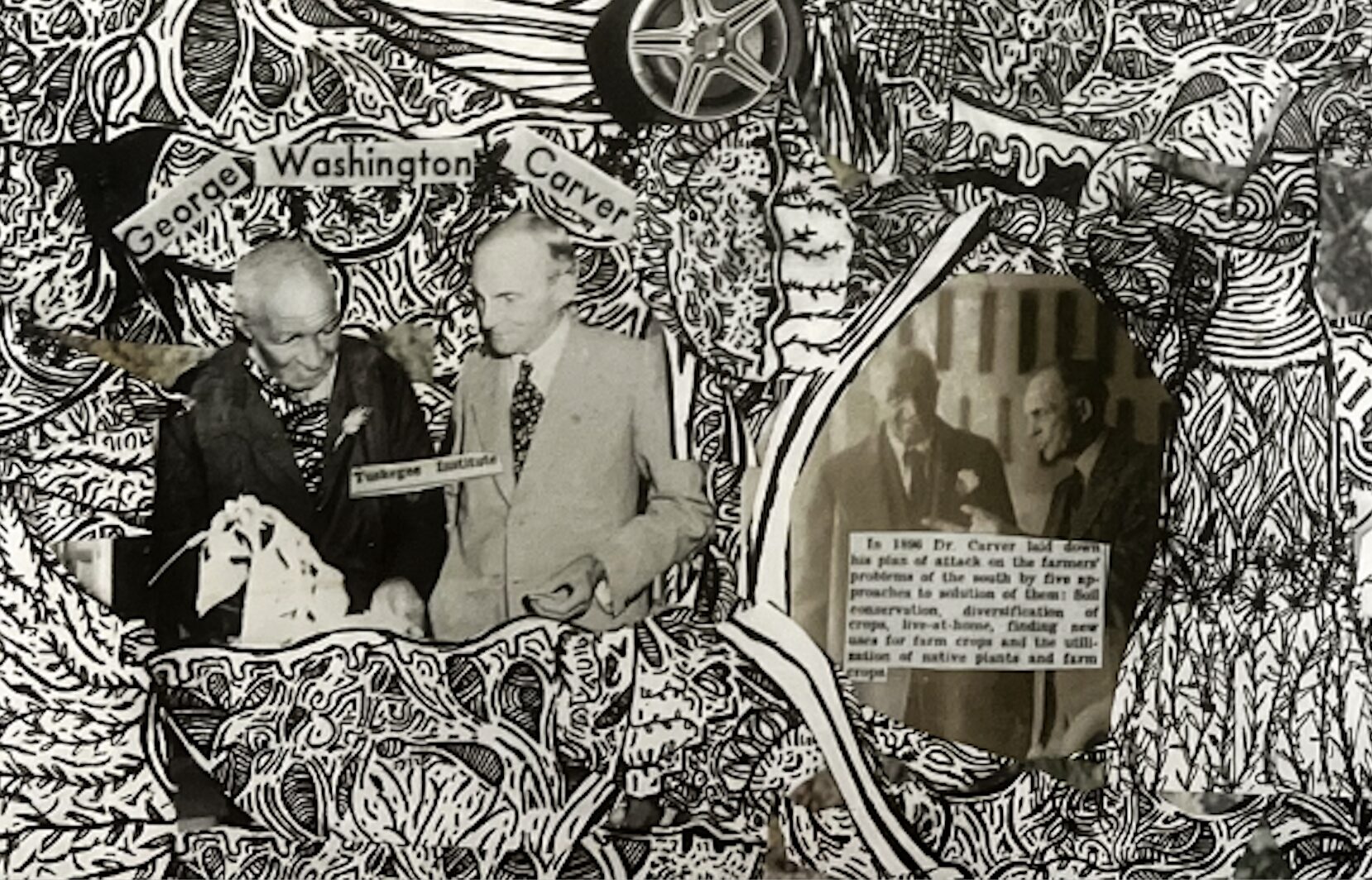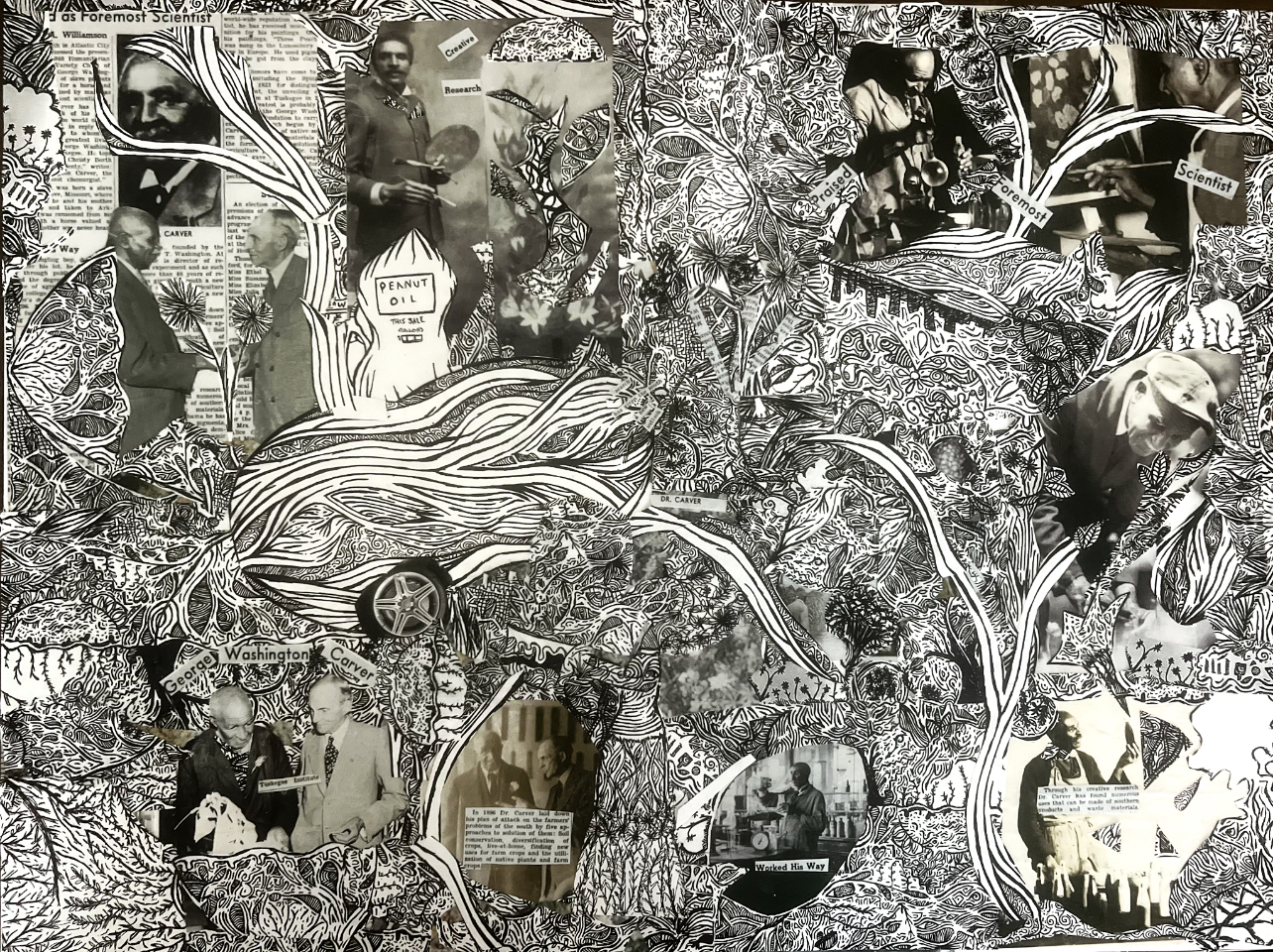
Mykah Scott

Mykah Scott
In February 2024, I travelled to the Ford Rouge Electric Vehicle Center in Dearborn, Michigan with a group of student storytellers. As an artist, my initial inquiry wasn’t solely focused on transforming the subject of Ford Motor Company’s electric vehicles and the company’s commitment to sustainability into art; rather, it centered on my personal connection with it.
As I toured Ford’s large complex, my brain was filled with information about electric batteries and carbon emissions, as well as multiple new terminologies I had learned when discussing Ford’s relations to sustainability.
Yet, within all those conversations about Ford’s history of technological innovation, something was still missing for me: an inspiration, a personal connection to Ford’s sustainability efforts, a familiar name. Later in the day, I had recognized this name as we later walked down the halls of the Henry Ford Museum and saw a single poster on the wall that read:
“George Washington Carver and Henry Ford both believed agriculture and industry could work together to shape a better future. In 1939, Carver visited the Soybean Laboratory in Greenfield Village to see Henry Ford’s innovative soy fibers designed for use in cars. See modern sustainable manufacturing ideas in action today at the Ford Rouge Factory Tour.”
As a current student of Tuskegee University, Carver’s name struck me like lightning. Carver taught agriculture at Tuskegee for 47 years and made transformative contributions to agricultural science during that time.

Henry Ford visited the Tuskegee Institute multiple times, where he helped dedicate the Carver Museum, learned from, and developed a friendship with Carver himself.
Carver’s impact on the Ford Motor Company was primarily through his research and innovations in agriculture, particularly regarding soybeans and peanuts. Carver’s work led to the development of new uses for these crops, including the creation of alternative materials such as plastics, lubricants, and fuels.
Henry Ford recognized the potential of Carver’s research and collaborated with him to explore the possibilities of using agricultural products in the automotive industry. Ford was particularly interested in finding alternatives to traditional materials like metal and rubber, which were in short supply and expensive.
Carver’s work indirectly influenced the Ford Motor Company by providing innovative solutions to material shortages and promoting the use of agricultural products in the industry.
This art piece was created to pay homage to the significant impact of George Washington Carver on environmental sustainability as well as to highlight the friendship between him and Henry Ford. The images in this multimedia piece are from the Tuskegee University archive that documented the relationship between Carver and Ford.